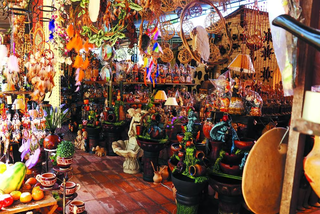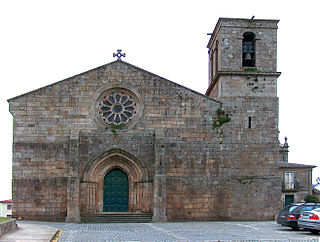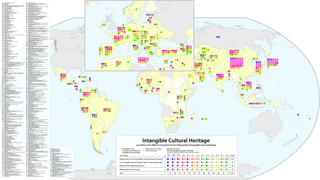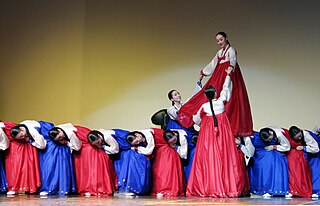This article relies largely or entirely on a single source .(March 2021) |
UNESCO's City of Crafts and Folk Arts project is part of the wider Creative Cities Network, founded in 2004, which designates cities worldwide that have made unique contributions to the field of crafts and folk arts. [1]
The current designated Cities of Crafts and Folk Arts of UNESCO are:
| City | Country | Year | Notes |
|---|---|---|---|
| Al-Ahsa [2] | 2015 | Ancient tradition of handicrafts, including textiles from palm trees, pottery, weaving, and joinery. | |
| Areguá [3] | 2019 | Known for its pottery, home to 450 pottery workshops. | |
| Aswan [4] | 2005 | Heritage of crafts and folk arts, including beadwork, tablecloth production, palm branch and leaf creations, as well as clay and needle-work products. | |
| Ayacucho [5] | 2019 | Known for its various crafts such as retablo, tapestry, Huamanga stone carving, pottery, textiles and embroidery. | |
| Baguio [6] | 2017 | Varied traditions in weaving, woodcarving, silver crafting, and tattooing and tattoo art. | |
| Ballarat [7] | 2019 | Historical and modern reputation as a melting pot for various forms and traditions of Indigenous Australian art. | |
| Bamyan [8] | 2015 | Unique history of crafts influenced by Muslim and Buddhist cultures that are still practiced in the area today. | |
| Bandar Abbas [9] | 2019 | History of creative arts such as practical and marine crafts, local clothing, and local musical instruments. | |
| Barcelos [10] | 2017 | Origin of the famous Rooster of Barcelos. | |
| Biella [11] | 2019 | History of wool manufacturing and textile manufacturing. | |
| Bukhara | 2023 [12] | ||
| Cairo [13] | 2017 | Ancient history of specializing in pottery, glassblowing, coppersmith, ceramic and jewelry. | |
| Caldas da Rainha [14] | 2019 | Center of ceramic production. | |
| Carrara [15] | 2017 | World-renowned white marble that has influenced Carrara's development as a center of crafts in Tuscany and in Italy. | |
| Castelo Branco | 2023 [12] | ||
| Chiang Mai [16] | 2017 | History as a trade center and a region of cultural diversity that has influenced a craft culture of pottery, silverwork, woodcarving, silk embroidery, and lacquerware. | |
| Chordeleg [17] | 2017 | Unique precious metal work, footwear manufacturing, pottery, and toquilla straw weaving that has been passed down through generations through oral tradition. | |
| Durán [18] | 2015 | Long history of syncretism between urban art and murals and traditional Ecuadorian art and craft. | |
| Fabriano [19] | 2013 | Status as a center for crafts such as pottery, weaving, blacksmithing, and paper making since the 12th century. | |
| Gabrovo [20] | 2017 | One of the largest craft centers in Bulgaria, specifically in woodcarving and wool weaving. | |
| Hangzhou [21] | 2012 | Ancient history of silk and tea production, as well as porcelain and bronze sculptures, known as China's Tea Capital. | |
| Hội An | 2023 [12] | ||
| Icheon [22] | 2010 | Historical and modern status as the center of Korea's ceramic and pottery crafting. | |
| Isfahan [23] | 2015 | Various crafts including carpet weaving, metalwork, woodwork, ceramics, painting and inlay works of various kinds. | |
| Jacmel [24] | 2014 | Traditions of painting, sculpture-making, and giant papier-mâché masks, as well as the place of origin of the Jacmel painting school in Haitian art. | |
| Jaipur [25] | 2015 | Historical crafts of jewelry making, carving, and painting that have been a center of trade since the early 18th century, with 53,500 workshops practicing these crafts today. | |
| Jingdezhen [26] | 2014 | Called the "Porcelain Capital" for its ancient history of porcelain work. | |
| Jinju [27] | 2019 | History of wooden furniture-making, ornamental knife-making, metal crafts and silk. | |
| João Pessoa [28] | 2017 | Unique production of cotton fabric, as well as production of pottery, embroidery, and crochet. | |
| Kanazawa [29] | 2009 | Samurai-inspired arts culture, unique craftwork such as the kaga-yuzen silk dying technique. | |
| Kargopol [30] | 2019 | Traditional textile embroidery, artisanal wood and bark carving, and clay-fired colored figures known as Kargopol toys, all of which form the most important sector of the city's economy today. | |
| Kütahya [31] | 2017 | Unique art of ceramic çini making which dominates the city's landscape. | |
| Limoges [32] | 2017 | History of ceramics, enamel, and glass-making, as well as a more recently founded porcelain industry. | |
| Lumbumbashi [33] | 2015 | Unique copper and malachite crafts created in the city, with over 50 workshops dedicated to malachite carving. | |
| Madaba [34] | 2017 | Largest number of mosaics discovered in their original location in the world, including its Byzantine and Umayyad mosaics and the oldest-surviving description of the Holy Land. | |
| Montecristi | 2023 [12] | ||
| Nassau [35] | 2014 | Bahamian cultural and creative traditions of straw weaving and Junkanoo craftmaking formed from a blend of Indigenous and African cultural traditions. | |
| Ouagadougou [36] | 2017 | Traditional craft of bronze and copper casting and crafting that forms a major sector of the city's economy even today. | |
| Paducah [37] | 2013 | History and contributions to the craft of quilt making in the United States. | |
| Pekalongan [38] | 2014 | Cultural history and importance of Batik crafts and cloths to the city and its identity. | |
| Porto-Novo [39] | 2017 | History and unique practice of various crafts such as wickerwork, blacksmithing, pottery, and manufacturing of musical instruments in the city, with 42 historical craft guilds in the city. | |
| San Cristobal de Las Casas [40] | 2015 | Preservation of Indigenous Mexican crafts and arts such as embroidery, pottery, blacksmithing, woodcarving, and amber craftmaking. | |
| Santa Fe [41] | 2005 | Native American crafts of jewelry, pottery, and weaving and the trade fairs in these crafts that have become an integral part of the city's identity, as well as Spanish colonial art such as folk dance, straw applique, and tinwork. | |
| Santa Marta [42] | 2018 | site of almost 12 ancient Caribbean cultures, known for their Wayúu handcrafts and Tayrona handmade gold pieces. | |
| Sharjah [43] | 2019 | Traditional craft of "Talli" weaving. | |
| Sheki [44] | 2017 | Status as the center of silk production and textiles in the Caucasus, as well as other traditional crafts such as wood-framed stained glass and pottery. | |
| Sokodé [45] | 2017 | Renowned for its art of weaving. | |
| Srinagar [46] | 2017 | Centuries old traditional handcrafted weaving arts such as the Pashmina shawl, as well as other handicrafts such as handbags, lampshades, and other handcrafted home decor items. | |
| Sukhothai [47] | 2019 | Culturally important artisanal products of gold and silver ornaments, textile weaving, and ceramic and Sangkhalok wares. | |
| Surakarta | 2023 [12] | ||
| Suzhou [48] | 2014 | History and culture of crafts in embroidery, carving, papermaking, painting, printing, and calligraphy. | |
| Tamba-Sasayama [49] | 2015 | Ancient history of unique tanba-yaki pottery, a source of local pride. | |
| Tetouan [50] | 2017 | History of crafts such as Zellige, Taajira embroidery, encrusted and painted wood and wrought ironwork. | |
| Trinidad [51] | 2019 | History of a fibre fabrics industry. | |
| Tunis [52] | 2017 | Known for its artisan souks that line alleyways. | |
| Ulaanbaatar | 2023 [12] | ||
| Viljandi [53] | 2019 | Various crafts including blacksmithing, ceramics, and wool. |













